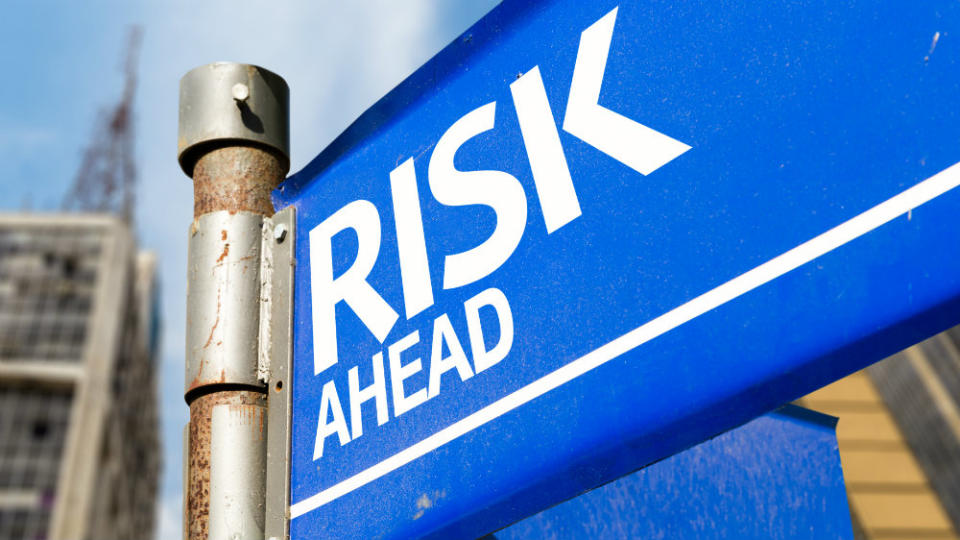1 Canadian Oversold Stock for High-Risk Investors

Written by Puja Tayal at The Motley Fool Canada
It’s said that with great returns comes great risk — but not always. Some high-risk stocks are on the verge of bankruptcy. The odds of them giving returns are low. But there are also high-risk stocks that have strong balance sheets that face a tough market environment.
No matter how many times a stock has survived a recession, past performance does not guarantee future returns. Such stocks have a higher risk but also a higher probability of better returns. One such high-risk stock is goeasy (TSX:GSY).
The oversold stock with high risk
“Risk comes from not knowing what you’re doing.”
One way to put the risk at ease is by creating a simulation of various scenarios and training yourself. But no matter how hard you train, the real world has an element of surprise, and your decisions at that moment determine the outcome.
Non-prime lender goeasy survived the 2007-08 recession, the 2018 trade war, and the pandemic. The stock has fallen 20-50% in past recessions and made new highs in the following growth periods.
goeasy provides short-term leasing and lending services through its easyhome, easyfinancial, and LendCare brands. It has partnered with over 4,000 merchants in retail, power sports, automotive, home improvement and healthcare verticals to help customers buy products on loan. It did well during the pandemic, as Canadians used stimulus money to pay off their loans. But this may be unlikely in the looming recession.
How a recession impacts non-prime lending
The overall stock market is in a downturn since the stimulus bubble burst, with goeasy stock down 53% from its September 2021 high. Even after this dip, the stock is trading 43% above its pre-pandemic level. This is because the company improved its revenue and profits during the pandemic. goeasy entered automotive financing and a securitization facility with banks to expand its business.
But now it faces another period of stagflation and maybe a recession. But these warnings pertain to the United States, and Canada could feel the pinch. However, it is unclear how big a pinch it would be. In a recession, prices of essentials grow to unaffordable levels. The central banks increase interest rates to discourage lending. As loans are not easily available, non-prime customers reach out to companies like goeasy to make ends meet.
This stage was visible in goeasy’s quarterly earnings, where it saw a record level of first-quarter loan growth (up 307%) led by significant organic growth. That is a material increase in a seasonally slower period. This hints that people bought ahead of interest rate hikes.
The next stage is stagflation. The rising interest rates are ineffective in controlling inflation because prices remain high due to supply shocks. This growing inflation and interest rate put pressure on consumer demand, stagnating economic growth. Bringing down supply in line with demand is easier. But bringing down demand in line with supply has significant repercussions.
A slowdown in consumer demand impacts employment, which reduces disposable income. Non-prime lenders are the worst hit and could default as they cope with rising prices. The prices fall when supply constraints ease and match the demand. Until supply eases and prices drop, there is a heightened risk of default, which makes goeasy a risky stock.
The oversold stock with a higher probability of better returns
If you look at the current fundamentals of goeasy, they look bright. But the stock is in the lending business, where the balance sheet is more important than the income statement. A large-scale default could push the non-prime lender into a multi-year loss.
It has a $900 million securitization facility with banks. Even if customers default, goeasy will have to pay interest to its lenders. The impact of a looming recession is hard to predict. The company may or may not face a significant default. If the default risk is manageable, the current stock price is an attractive valuation, and the stock could double your money during the economic recovery.
The probability of goeasy surviving the looming recession with lower default risk is high, as past recessions have trained it well on balancing defaults. You can invest a small amount in the stock with a stop loss at a 20% dip.
The post 1 Canadian Oversold Stock for High-Risk Investors appeared first on The Motley Fool Canada.
Should You Invest $1,000 In goeasy?
Before you consider goeasy, we think you’ll want to hear this.
Our S&P/TSX market beating* Stock Advisor Canada team just released their 5 best stocks to buy this month that they believe could be a springboard for any portfolio.
Want to see if goeasy made our list? Get started with Stock Advisor Canada today to receive all 5 of our Best Buys Now, a fully stocked treasure trove of industry reports, two brand-new stock recommendations every month, and much more.
See Our Best Buys Now * Returns as of 6/21/22
More reading
Fool contributor Puja Tayal has no position in any of the stocks mentioned. The Motley Fool has no position in any of the stocks mentioned.
2022

 Yahoo Finance
Yahoo Finance 